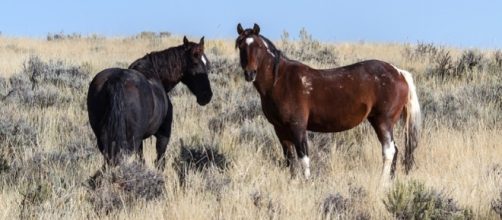The wild horses of Namibia need to deal with relocation or imminent extinction. For over a hundred years the wild horses have survived the desert conditions and through natural selection are recognised as a breed on their own. Known as the 'Namibs' they have faced increasing pressure from drought conditions. The New China News cited the Namibia Wild Horses Foundation (NWHF) as saying this Wednesday that 'Namib Wild horses, facing dwindling population, would be relocated to protect them from predators.'
Origins of Namibia's wild horse population
The origins of the wild horses of Namibia are shrouded in history and there are two main theories.
The first one is that they were the scattered remnants of horses used by the troops of the Union of South Africa during Wolrd War One. The Namibia Wild Horses Foundation explains on their website that this story arose after Germans had dropped bombs on the troops and some of the horses ran away. Another theory is that they came from Luderitz where horses were bred both as racehorses in the early 1900's and as working horses for the flourishing mining industry. When the breeder was interred during the war, the horses simply wandered off.
Surviving horses adapted to harsh desert conditions
The Garub area of Namibia has permanent water sources, but the land is harsh and dry. Somehow the wild horses adapted and survived.
The past few years though have taken a sad toll on this hardy group of wild African equines. Since 2013 no foals have survived and in 2017, the drought has pushed those Wild Animals capable of surviving in arid conditions without much water into areas even more hostile than those where the horses eke out their existence. With the wild animals gone, the predators, especially hyena are preying upon the last remnants of these noble beasts.
Extinction is imminent
According to the NWHF, there are only 42 remaining mares and at the current rate of predation, they could even be officially extinct by August of this year. It is becoming increasingly apparent that without urgent relocation, the animals will perish.
"The NWHF and the Environment Ministry concluded that a solution that would be best for both the hyenas and the horses is to move the horses," they said. It is hoped that a safe place will be found for the horses near to Garub where they have lived for so long. Hopefully, the public will still be able to see and photograph the horses in their new location.

